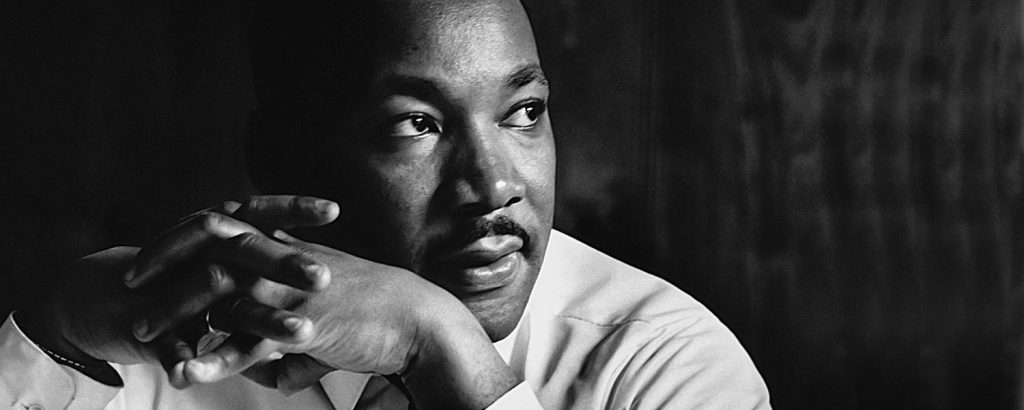
In discussion of race relations, we can think of no better document to read than Martin Luther King, Jr.’s Letter from Birmingham Jail. This letter is the starting point of any meaningful understanding of the racial issues that have plagued the United States, and demonstrates why the movement Dr. King began is so critical. The Letter provides a challenge and a rationale for Christians to be directly involved in the struggle for racial equality.
The letter is truly a masterpiece. It gives the rationale for racial equality and for Dr. King’s method, and helps us understand the urgency of his ministry. If you have not read it, we strongly encourage you to do so — read it, think about it, and pass it along to your friends.
Download a PDF version of the Letter (145K, 10 pages)
Background of the Letter
The Birmingham Campaign was a series of non-violent demonstrations by black activists in Birmingham, Alabama. The protests, organized by the Alabama Christian Movement for Human Rights (ACMHR) and the Southern Christian Leadership Council (SCLC), were aimed at ending the segregation ordinances in that city.
Dr. Martin Luther King, Jr. was one of the founding members of the SCLC, and he joined other prominent civil rights activists and pastors in the demonstrations and marches. On Good Friday, April 12, Dr. King was arrested and jailed—along with a handful of other protestors—for violating a court injunction which prohibited public civil rights demonstrations in Birmingham.
While Dr. King was in the Birmingham jail, he read a statement from a group of Alabama’s white religious leaders, questioning “the timing and methods” of the demonstrations. The city had just been through a contentious election, and the white leaders believed that the protests were ill-timed. They spoke out to urge the SCLC and the ACMHR to pursue their desired changes through the court system, rather than through direct action.
Early in his eight-day imprisonment, King read the white ministers’ statement and began composing a response. He gave bits and pieces of the letter to his lawyers to take back to movement headquarters, where the Reverend Wyatt Walker began compiling and editing the literary jigsaw puzzle. The men settled on a final version on April 16, 1963. The 21-page, typed, double-spaced essay appears as though it is personal correspondence, addressed to the eight white ministers. It opens with a salutation reading “My dear fellow clergymen” and concludes with “Yours for the cause of peace and brotherhood.” The final version of the letter explores two central themes: justification and admonishment. King justifies his presence in Birmingham, his uses of nonviolence and direct action, his timing, his willingness to break laws, and his apparent extremism. The civil rights leader also admonishes white moderates and white churches for not doing more to help the movement’s quest for equality.
The document, now considered a “classic work of protest literature,” was never actually sent to the eight ministers; it was published in the national press on May 19, 1963, and was then used by the civil-rights movement across the country to respond to other criticisms and questions. It is now used in schools and colleges across the country, and appears in anthologies as a “tangible, reproducible account of the long road to freedom.”
Source: The Encyclopedia of Alabama online archive, “Letter from Birmingham Jail.” S. Jonathan Bass, Samford University. Published November 9, 2007

